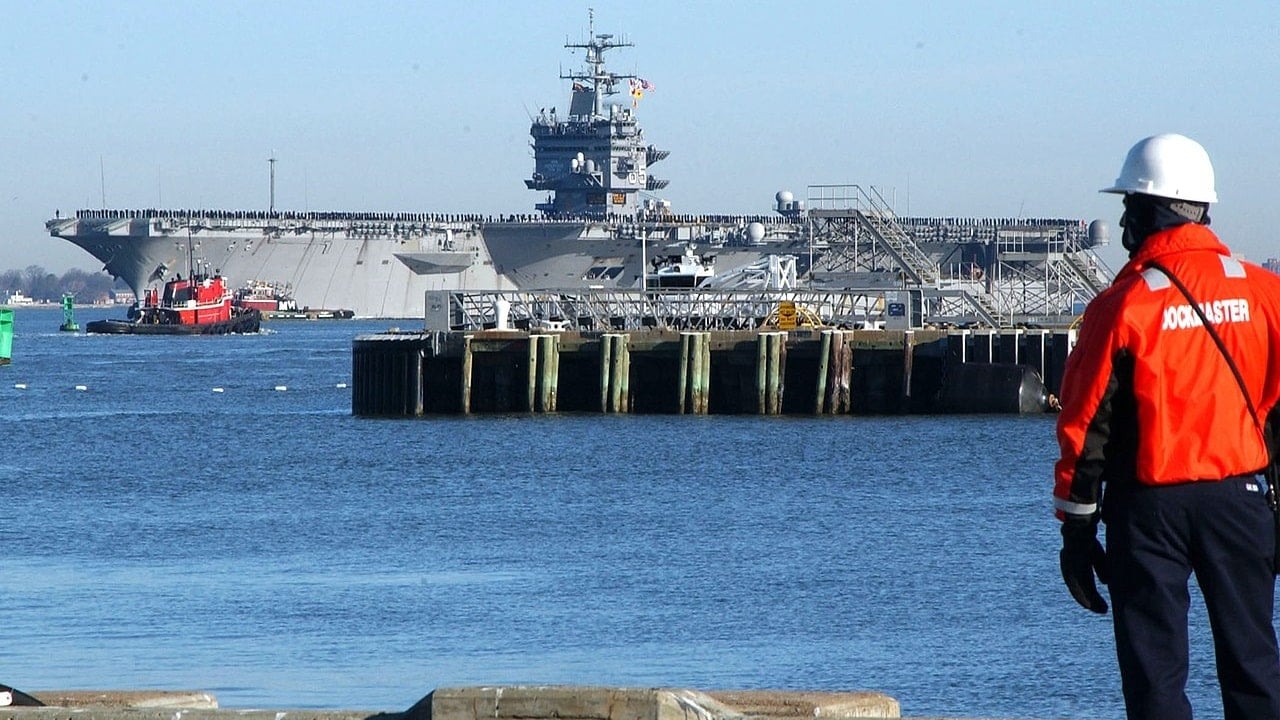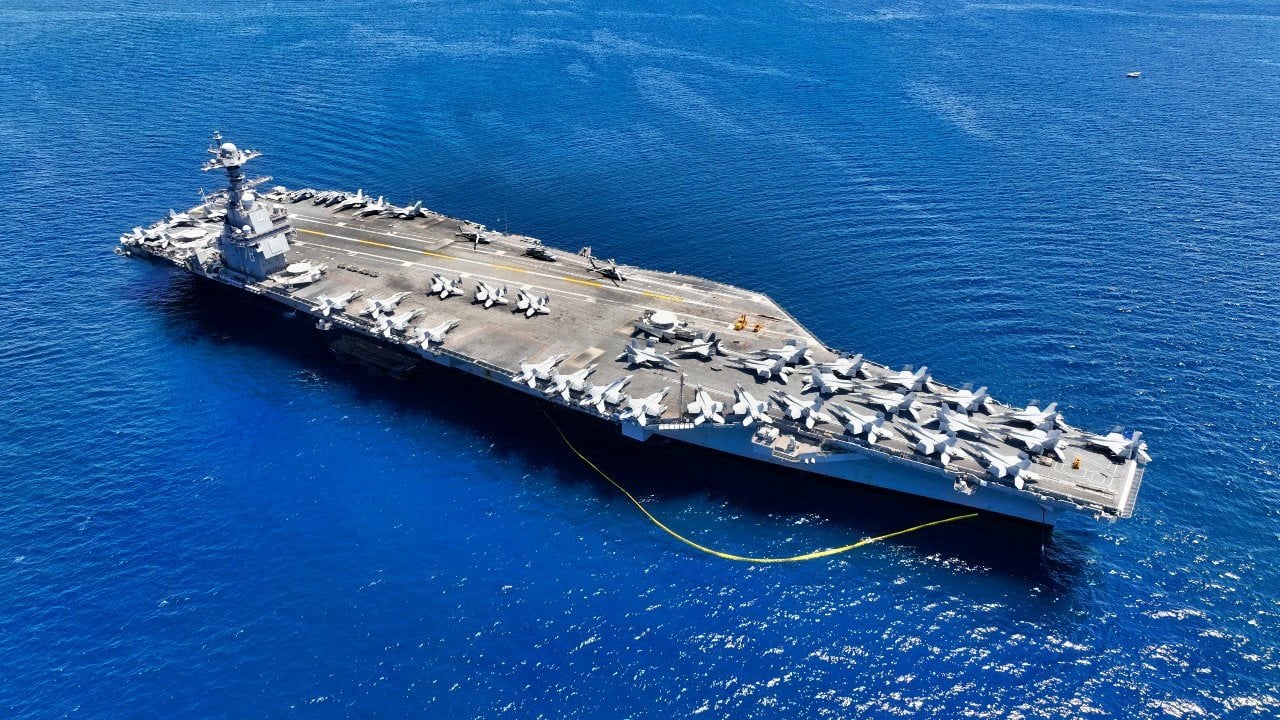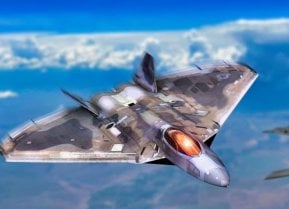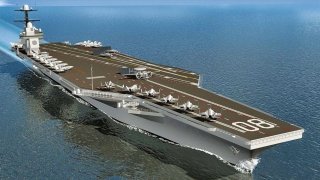USS Enterprise: A Tale of Two Aircraft Carriers Facing Unexpected Delays
The U.S. Navy has an Enterprise problem – actually two of them. The future Gerald R. Ford -class supercarrier USS Enterprise (CVN-80) is currently on track to be delivered a year and a half later than previous projections. At the same time, the Navy is still dealing with the dismantling of the former USS Enterprise (CVN-65), the world's first nuclear-powered aircraft carrier.
Summary: The U.S. Navy is navigating challenges with both the past and future incarnations of the USS Enterprise. The forthcoming USS Enterprise (CVN-80), a Gerald R. Ford-class supercarrier, faces delays, now scheduled for a 2029 commissioning, 18 months behind its original timeline, primarily due to supply chain issues exacerbated by the pandemic. Meanwhile, the Navy grapples with the complex decommissioning of the former USS Enterprise (CVN-65), the world's inaugural nuclear-powered aircraft carrier, inactivated in 2012. The dismantling process is daunting, given the vessel's nuclear reactors and radiation contamination, presenting logistical and financial hurdles. These dual dilemmas highlight the intricate balance between advancing naval capabilities and responsibly managing legacy assets.
The U.S. Navy has an Enterprise problem – actually two of them. The future Gerald R. Ford -class supercarrier USS Enterprise (CVN-80) is currently on track to be delivered a year and a half later than previous projections. At the same time, the Navy is still dealing with the dismantling of the former USS Enterprise (CVN-65), the world's first nuclear-powered aircraft carrier.
In With the New Ford-Class USS Enterprise
CVN-80 was laid down in April 2022 and is currently scheduled to be launched in November 2025. Its commissioning is now planned for September 2029 – about 18 months later than its previous scheduled delivery date, USNI News reported. According to the sea service's Fiscal Year 2025 budget request, "delays in material availability and industry/supply chain performance" are the key factors in the slowdown.
The later-than-expected arrival of the third Ford-class carrier is a sign that even with the Covid pandemic largely in the rearview, its lasting impact can still be felt.
Last November, Huntington Ingalls Industries (HII) announced the delays in its earnings call with investors and attributed much of the issue to the pandemic. At the time, HII chief Chris Kastner suggested that the carrier was forecast to be approximately 12 months late. Even that projection was optimistic.
The Navy continues to struggle with the production and maintenance of its fleet. The future USS Enterprise is set to replace the second Nimitz-class carrier, the USS Dwight D. Eisenhower (CVN-69), which will now likely have her service time extended by at least a year.
In addition, the Navy has been mulling a decision to delay the acquisition of CVN-82 and CVN-83 – with the service pursuing a block buy contracting strategy. That would stretch out timelines and spread out the funding. But the shipbuilding industry – and notably the Aircraft Carrier Industrial Base Coalition that represents the suppliers – has warned it could be forced to lay off employees.
Out With the Old USS Enterprise
While the future USS Enterprise will arrive late, the retired vessel of the same name has also been a problem. At the time of her inactivation, she was the third-oldest commissioned vessel in the Navy, after the wooden-hulled USS Constitution and the USS Pueblo. The "Big-E" was in service for more than 55 years.
She was inactivated in December 2012 and officially decommissioned in February 2017. In the intervening years, the service has struggled with how to dispose of a nuclear-powered carrier. The carrier had eight reactors and numerous compartments contaminated by radiation. It therefore could not be used as a target ship in a SINKEX, or a live-fire training exercise during which a vessel is sunk – nor could she be preserved as a museum vessel.

It was previously estimated that dismantling the carrier could take at least five years and cost between $554 million and $696 million at a commercial yard.
Under another plan, dismantling would take more than 15 years and cost as much as $1.358 billion.
One issue is that Navy shipyards are overworked. They cannot adequately address the maintenance of active warships, so there simply is not the capacity needed to take old nuclear-powered carriers apart.

It was finally announced last year that the former CVN-65 would be disassembled at a private shipyard, freeing up much-needed drydock space at the service's own public yards for repairing vessels in active service. Of course, it will still be a costly and time-consuming affair, and the retired USS Enterprise will only be the first nuclear-powered flattop to require such complicated decommissioning. Eventually, all of the Nimitz-class ships will undergo a similar process – and so too will CVN-80, in about 60 years.
Author Experience and Expertise: Peter Suciu
Peter Suciu is a Michigan-based writer. He has contributed to more than four dozen magazines, newspapers, and websites with over 3,200 published pieces over a twenty-year career in journalism. He regularly writes about military hardware, firearms history, cybersecurity, politics, and international affairs. Peter is also a Contributing Writer for Forbes and Clearance Jobs. You can follow him on Twitter: @PeterSuciu. You can email the author: [email protected].


